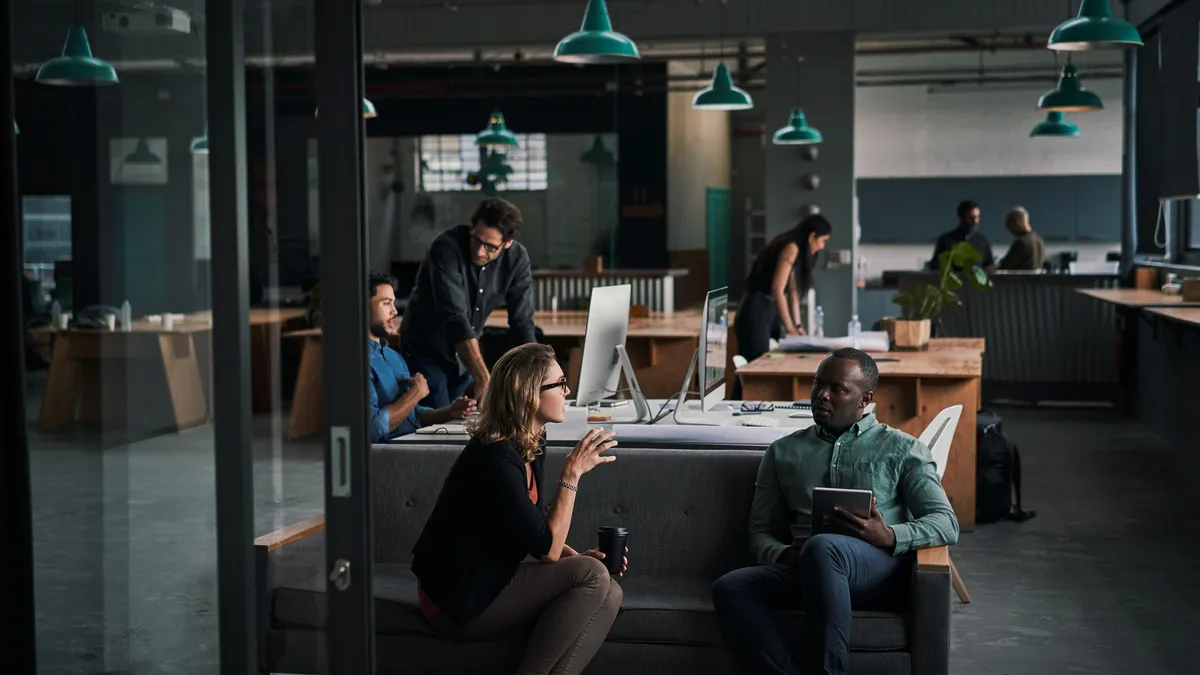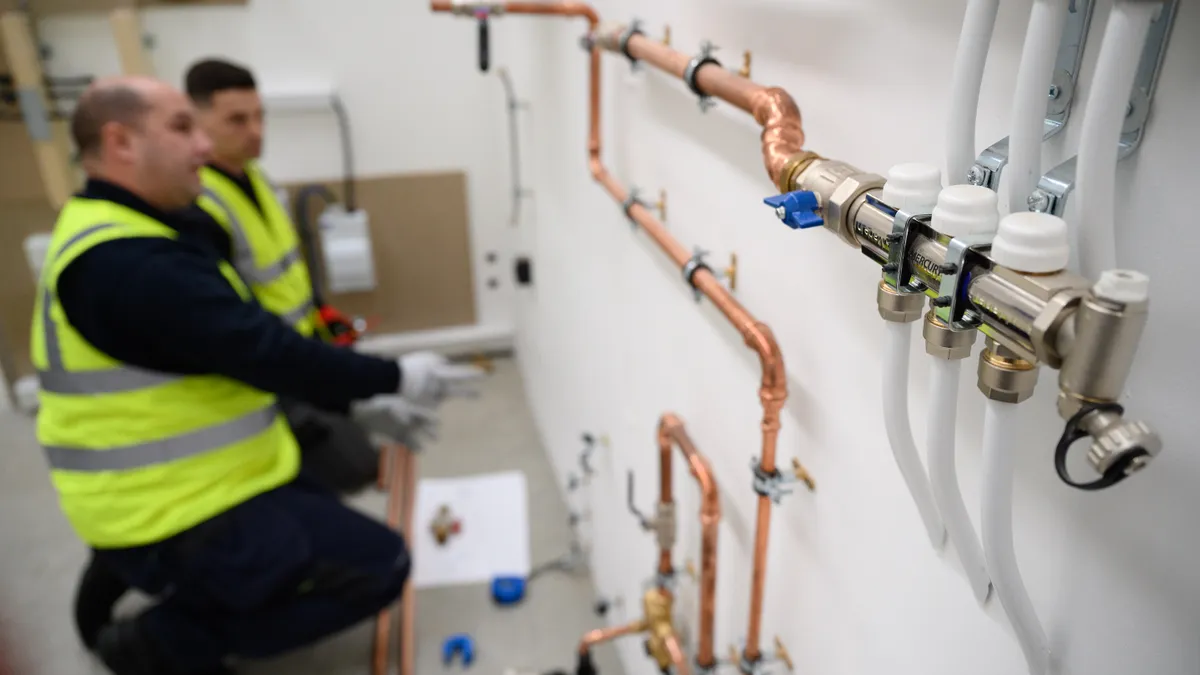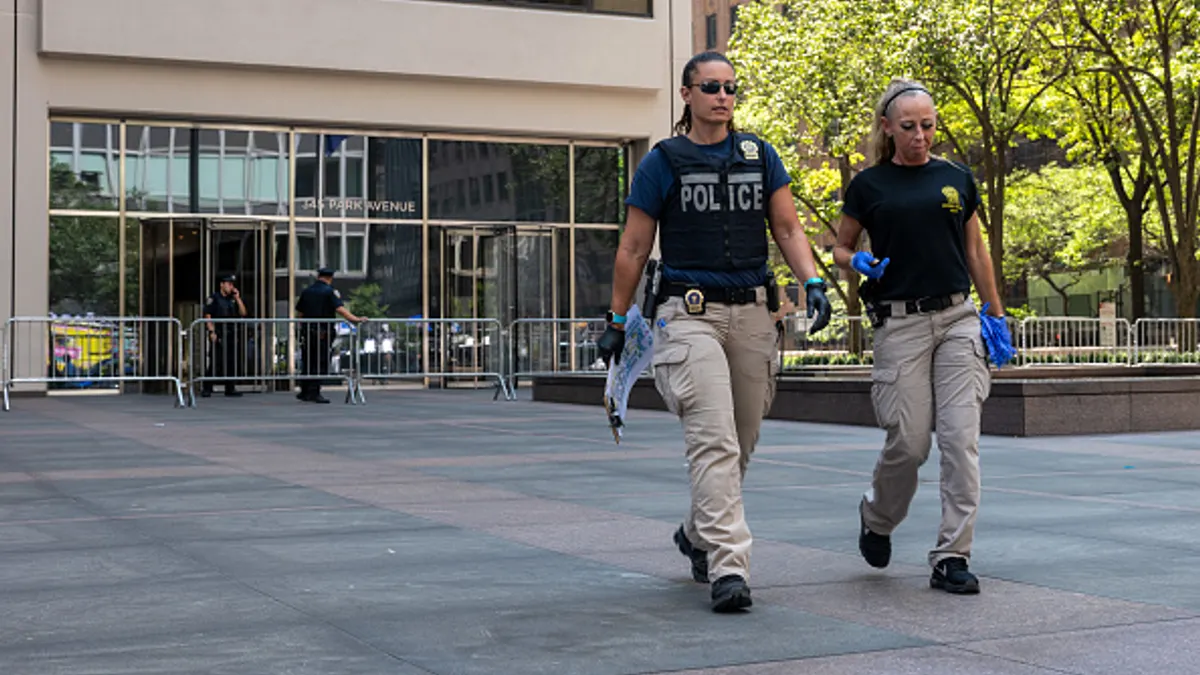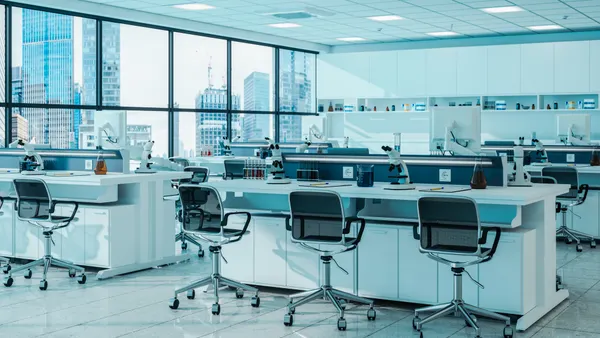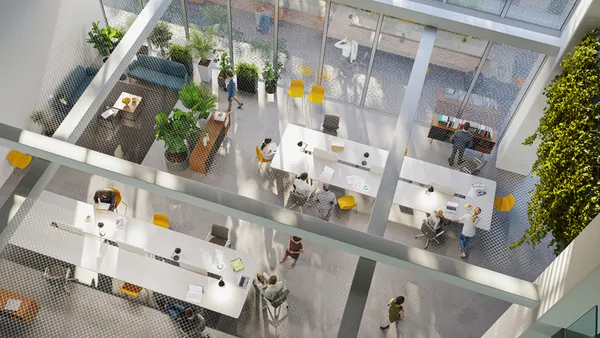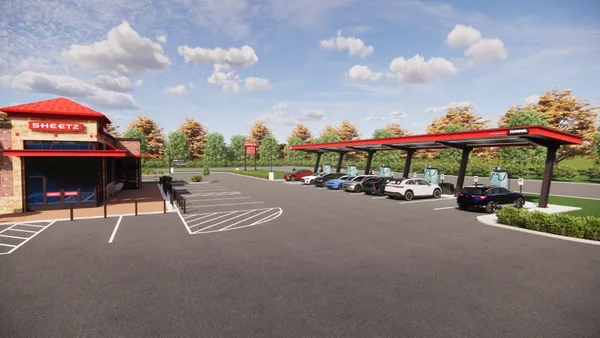National office demand showed weakness in the first quarter of 2025 following nearly two years of growth, according to the VTS office demand index. But the market remained stable overall, thanks to elevated leasing volume, per CBRE data.
January saw a sharp 18.8% drop in occupancy, wiping out previous year-over-year gains and leaving VTS’ office demand index, or VODI, down 7.1% year over year. VODI measures average office occupancy compared with an earlier baseline. The Q1 VODI of 68 means market demand at the end of Q1 was 68% of the average demand across 2018 and 2019.
That result was 4.6% higher year over year, but that figure masks previous declines, VTS says. The office demand occupancy analytics firm says that growing uncertainty around U.S. trade policy is compounding a slowdown in the labor market, with fewer job postings indicating a slower hiring rate.
The early-year declines in occupancy cast a shadow on what was otherwise a relatively resilient market in Q1. Overall, the U.S. office market remained stable in the first quarter of the year, CBRE says in its Q1 U.S. office report, also released Wednesday. It found positive net absorption, healthy leasing activity and relatively low levels of new supply. Although net absorption decreased from 10 million square feet in the fourth quarter of 2024 to 2.3 million square feet, Q1 still marked the fourth consecutive quarter of positive demand, the firm says.
The overall office vacancy rate increased slightly, to 19.0%, due to delivery outpacing net absorption, but the prime office vacancy rate fell 50 basis points, to 14.8%, CBRE says.
While demand has come a long way, momentum appears to be cooling, VTS concludes in its report. “The softening VODI points to weakening office demand, though this may be offset by employers regaining leverage in a cooler market and pushing for more on-site work,” it says.
It is still unclear whether this shift marks a temporary pause or a more durable change, but it may be closely tied to newly heightened economic uncertainty due to changes in U.S. trade policy, according to the firm.
“Uncertainty typically prompts caution, leading employers to delay hiring and related commitments, such as signing new office leases,” VTS says, noting that while a cooling labor market weakens office demand, the current situation is more complex.
“We’re still in the midst of a broad return-to-office trend following the COVID-19 pandemic. As the labor market cools, employers gain bargaining power, enabling them to push for more on-site work, which helps offset the drag on office demand,” VTS says. “A recent drop in the share of demand from the [finance, insurance and real estate] sector which is more sensitive to uncertainty and further along in returning to the office, underscores the trend.”
Despite decreases in demand as recorded by VTS, the CBRE report found that leasing activity increased 18% year over year in Q1, to 54 million square feet, exceeding the five-year quarterly average and falling just 3% short of the first quarter average in 2018 and 2019.
Renewals accounted for about 40% of overall leasing, up from the 31% average share in 2018 and 2019, with occupiers favoring renewals to avoid the cost of moving and the rising cost of building out space, CBRE says.
Available sublease space also continued to fall, decreasing to 3.7% — down 70 basis points from a year ago. CBRE attributed this decline to a combination of lease expirations and new sublease activity. About half of all available sublease space is considered vacant and is included in the overall vacancy rate of 19.0%, it says.


